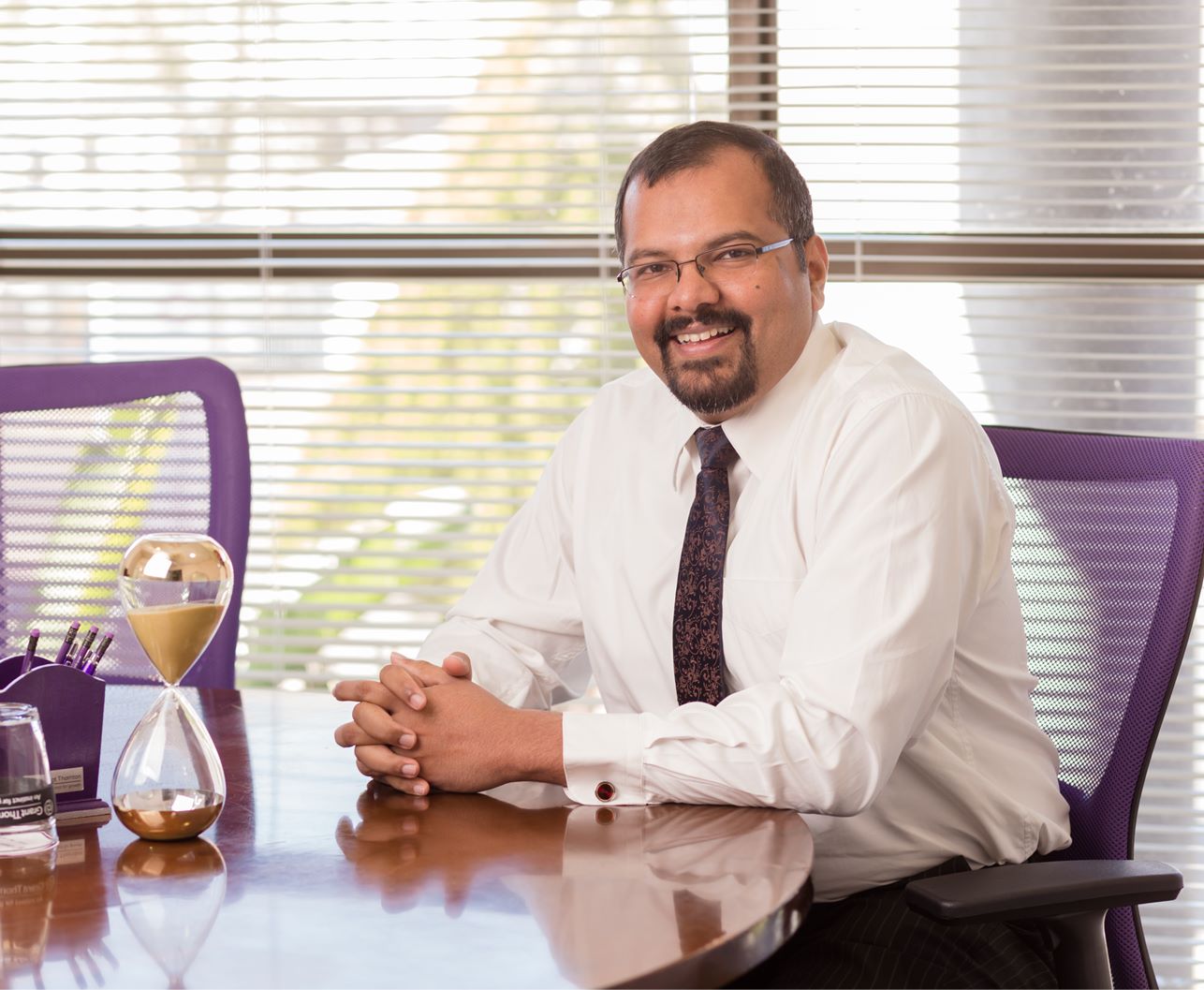-
 IFRS Navigating the changes to International Financial Reporting Standards (2024 edition)The 2024 edition of the publication has been updated for changes to International Financial Reporting Standards (IFRS) that were published between 1 January 2023 and 31 December 2023. The publication now covers 31 March 2023, 30 June 2023, 30 September 2023, 31 December 2023 and 31 March 2024 financial year ends.
IFRS Navigating the changes to International Financial Reporting Standards (2024 edition)The 2024 edition of the publication has been updated for changes to International Financial Reporting Standards (IFRS) that were published between 1 January 2023 and 31 December 2023. The publication now covers 31 March 2023, 30 June 2023, 30 September 2023, 31 December 2023 and 31 March 2024 financial year ends. -
 Our publications IFRS 16 - Prepare for lease accounting changesThe new IFRS 16: Leases standard has been issued by the IASB. The core principle of the new standard is that lessees should recognise all leases on their balance sheet.
Our publications IFRS 16 - Prepare for lease accounting changesThe new IFRS 16: Leases standard has been issued by the IASB. The core principle of the new standard is that lessees should recognise all leases on their balance sheet.
-
IT audit and advisory services
We help clients to navigate the complexities and provide you with robust independent assurance that your IT risks, key management priorities and core systems are being appropriately managed.
-
Co-sourced internal audit
We help clients to navigate the complexities and provide you with robust independent assurance that your IT risks, key management priorities and core systems are being appropriately managed.

-
Automotive
Advances in technology are increasing the risk of disruption in the market and existing players, both upstream and downstream, are taking note. They’re innovating. They are making more use of lightweight materials and alternative fuels and taking the first steps towards intelligent and connected vehicles.
-
Asset management
Increasing regulation and investor demands for returns and transparency have brought new challenges to the asset management sector. Within this new world, organisations with the operational agility and strong infrastructure to embrace change and innovation can maximise opportunities.
-
Insurance
In a market where businesses operate with a 30-year outlook change is rarely spectacular or sudden. Yet there’s no doubt that important shifts are underway in insurance.
-
Banking & securities
Grant Thornton’s global banking and securities team consists of country, regional and service line leaders with experience of supporting clients in more than 80 countries.
-
Technology
The ability to anticipate and adapt is more important in the technology industry than ever before.
-
Media
The media industry is in the grip of a technological revolution and it’s affecting every part of the business. Distribution models, commissioning procedures and revenue streams are all evolving as the industry responds to the shift to digital and personalisation. This has resulted in a flood of new channels, platforms and experiences, all of which have to be constantly fed with compelling, quality content. If they are not, audiences move on.
-
Telecommunications
The telecommunications industry is changing rapidly and facing pressure from all sides.
Many businesses globally are missing out on opportunities because of a lack of diversity in senior leadership teams. This means that a business does not necessarily reflect the markets or communities in which they operate, and it could be holding them back.
- 58% of businesses in Botswana believe ethnic diversity is important to their success, higher than global average of 40%
- 72% of businesses in Botswana think an age diverse team is important, higher than global average of 51%

In our recent International Business Report (IBR) research into diversity, we captured the views of 2,500 business leaders in 35 countries. On average, only 40% of businesses believe diversity is important to their success, and just 14% are taking action to improve the diversity of their senior team. We find that businesses are, for the most part, not ethnically or gender diverse. Age diverse teams are more common, although it is far from the norm to have a senior team member who is under 35 years old.
“Diversity of thought gives businesses a competitive edge, and thus businesses need to embrace diversity in age, gender and ethnicity in their work force especially at senior management level, and look for ways to become inclusive organizations. A diverse workforce is a reflection of a changing world and marketplace, and organisations should thrive to reflect the markets or communities in which they operate within their business model. There are many challenges in managing a diverse workforce that requires strategic planning beyond simply acknowledging differences in people. It involves recognizing the value of differences, combating discrimination, and promoting
inclusiveness. It is pleasing to note that African business leaders are at the forefront in acknowledging the importance of diversity, and I encourage local business leaders to grasp the opportunity to promote the growth of businesses and our community at large through diversification." Anjana Suresh, Partner - Grant Thornton Botswana.
Ethnic diversity
The findings show that the average number of ethnic groups represented by senior management teams worldwide is 1.5. Looking at regional data, only African businesses have more than two ethnic groups at 3.2. The lowest regional figure is 1.2 for the European Union.
At a national level, we found that only six out of 35 countries we surveyed have businesses with typically more than two ethnic groups (which we classify as ethnically diverse) represented in their leadership teams: Botswana, India, Malaysia, Nigeria, the Philippines and South Africa. To some extent, this reflects the ethnic diversity of these countries in general. The populations of Nigeria, India and South Africa are among the 20 most ethnically diverse nations in the world, and Malaysia ranks near the top third.
However, Botswana and the Philippines cannot be accounted for in this way as their populations are far less ethnically diverse. Therefore, it may indicate a difference in attitude and commitment when it comes to increasing ethnic diversity of their leadership teams. In Botswana, a much higher than average number of businesses (58%) believe ethnic diversity is important to their success, while a higher than average number of businesses (18%) in the Philippines have policies in place to increase the ethnic diversity of their senior team.
Age diversity
A 51% majority of businesses think an age diverse team is important, which appears to reflect the composition of senior teams, while Botswana reflects a significantly higher belief in the importance of age diversity at 72%. However, there is still a gap between perceived importance of age diversity and plans to improve it. Only 16% of businesses globally, and 12% of businesses in Botswana are taking action to extend their age range. Companies recognise its value, they just aren’t acting on it. 26% of senior teams, globally, include an individual who is older than 64 years old, while 24% have a senior member who is aged 35 or younger. In Botswana, 10% of senior teams
include an individual who is older than 64 years old, and 72% have a senior member who is aged 35 or younger.
Gender diversity
In 2017, globally a historic milestone was reached: one in four senior roles are now held by women. However, at only 25%, parity between men and women at executive level is still a long way off. In previous research, we have uncovered key obstacles to change to better understand how we can find solutions for greater gender equality. In this year’s upcoming Grant Thornton International Business Report, Women in Business 2018 research, we are investigating the roles played by governments and businesses in encouraging people to act. This will be published on International Women’s Day, 8 March 2018. By considering how different policies interact, we hope to better
understand where active intervention exerts positive influence on business attitudes and behaviours.
Increasing diversity
The “Diversity Snapshot” explores the diversity of senior teams around the world by ethnicity, age and gender. There are a number of positive steps that Grant Thornton has suggested that businesses can take to increase diversity, some of which include:
- Consider your wider context. Look at your country’s population and how your business’ diversity measures up by comparison. Then place this in relation to your sector and assess your own performance. Use this as the basis for a more productive and persuasive conversation with employees.
- Address unconscious bias. Awareness of an issue is not enough to overcome natural and hardwired bias. Embed measures that nudge employees in the right direction; for example, publicising “unusual” role models (such as job sharing at senior level) to challenge stereotypes and show what is possible.
- Learn to talk about diversity sensitively and naturally. Consult employees on the language they use to talk about gender, age, race, ethnicity, and any other form of diversity, to create a framework that facilitates a shared and open conversation. Ask what are the culture issues that exist and what support they need to be successful.
- Do not confuse diversity and inclusion. A business can have a diverse team that is not inclusive, or an inclusive team that is not diverse. Challenge yourselves to bring these concepts together without collapsing them in to one.
- Check for gaps in your perspective. Consider expanding the skill set of your senior team by reaching out to different age groups who may bring a different generational perspective to key business issues like digitalisation and automation.
For the full “Diversity Snaphot” report, please visit www.grantthornton.global/en/insights/articles/women-in-businessdiversity/
